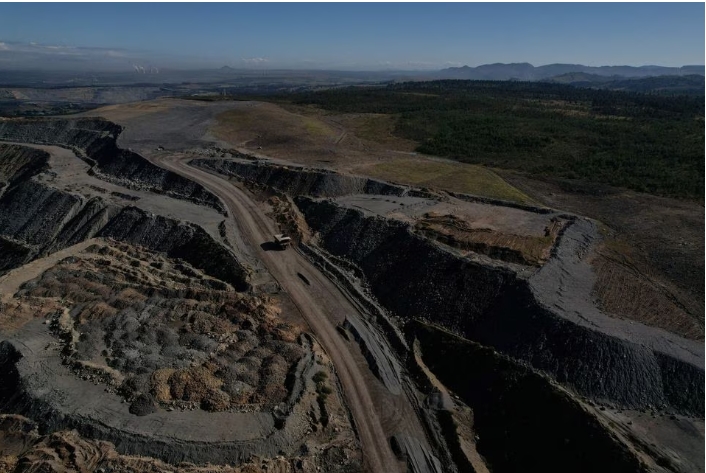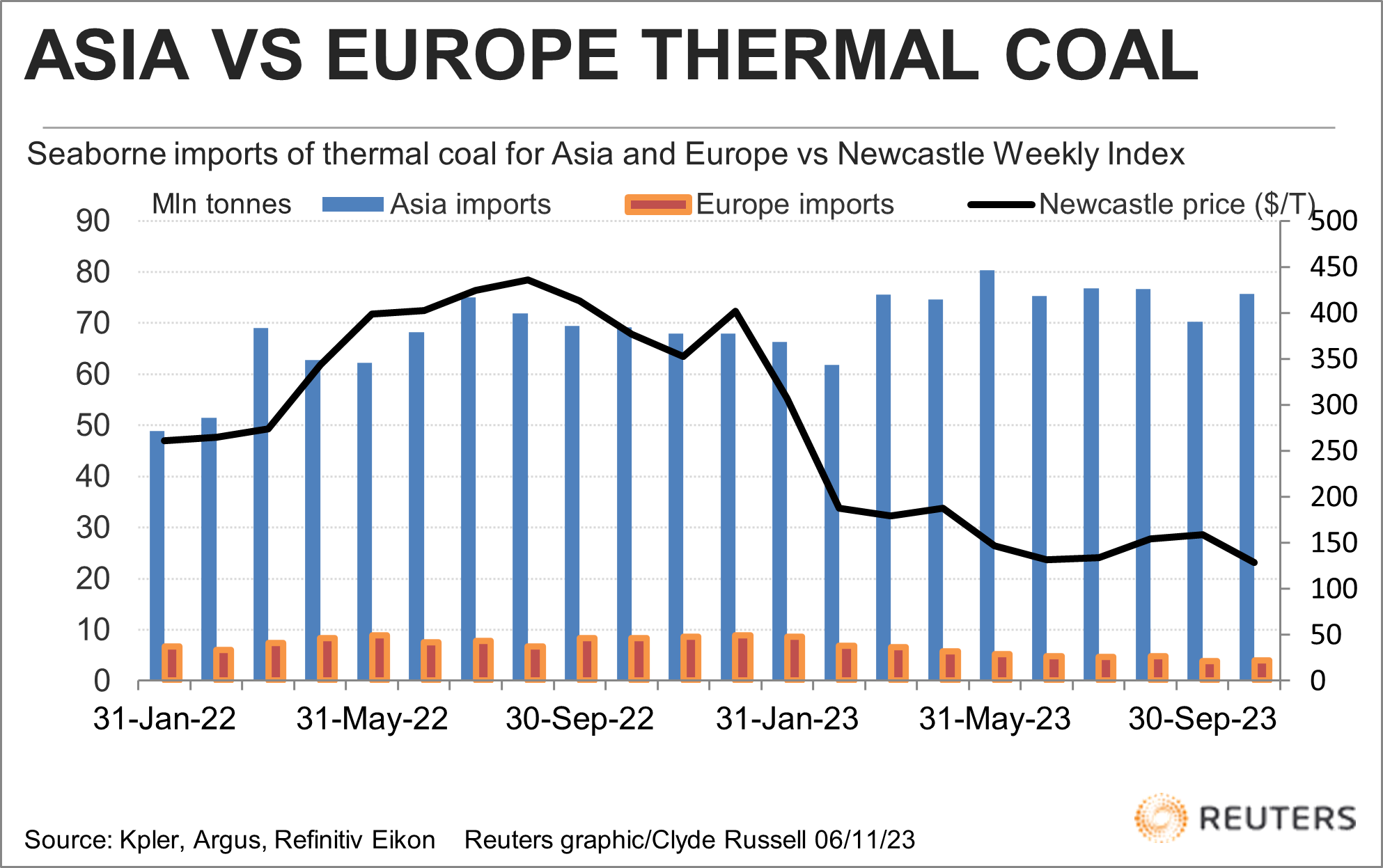
Lower domestic prices in top importer China are also helping keep seaborne prices subdued as suppliers look to remain competitive in the world's largest producer and consumer of the fuel used mainly to generate electricity.
Asia's imports of seaborne thermal coal climbed to 75.77 million metric tons in October from 70.29 million in September, according to data compiled by commodity analysts Kpler.
The October volume was also above the 69.63 million metric tons imported in the same month last year.
China's imports led the gain in October, with the world's second-largest economy showing arrivals of 24.84 million metric tons, up from 23.59 million in September and 22.53 million in October last year.
India, the world's second-biggest importer of coal, also saw rising imports in October with Kpler recording 19.09 million metric tons of thermal coal arrivals, up from 13.75 million in September and the most since June 2022.
The next two biggest importers, Japan and South Korea, recorded small declines in October arrivals, but both are on track to see higher imports in November as the northern hemisphere winter approaches.
While physical demand for seaborne thermal coal is solid in Asia, the same can't be said for prices.
China mainly buys thermal coal from the two biggest exporters, Indonesia and Australia.
Indonesian coal with an energy content of 4,200 kilocalories per kg (kcal/kg) , as assessed by commodity price reporting agency Argus, slid to $58.46 a metric ton in the week to Nov. 3.
This was down from the recent high of $61.70 a metric ton in the week to Oct. 20 and the grade is now down by 35% since the end of last year.
China has returned to buying Australian thermal coal after ending an informal ban on imports earlier this year as political tensions between Beijing and Canberra eased.
Chinese buyers prefer Australian coal with an energy content of 5,500 kcal/kg and this grade ended last week at $94.18 a metric ton, down a third consecutive week from the recent peak of $105.85 in the seven days to Oct. 13.
China's domestic prices have been declining, dragging down the price for imports, with thermal coal at the northern port of Qinhuangdao ending at 930 yuan ($127.40) a metric ton on Nov. 3, down 14% from the recent high of 1,080 yuan from Oct. 11.

Imports of thermal coal by Asia, Europe vs Newcastle Weekly Index
EUROPEAN DEMAND
In addition to China's domestic prices forcing imported grades lower, the lack of demand in Europe means Asia is having to absorb more seaborne supplies.
Europe's imports were 3.96 million metric tons in October, slightly higher than the 3.92 million in September, according to Kpler data.
But September and October were the two weakest months for imports this year, and less than half the 8.55 million metric tons Europe imported in October last year.
Demand for thermal coal in Europe has declined as the continent managed to overcome the energy crisis created by the sudden loss of much of the supply of Russian pipeline natural gas after Moscow's invasion of Ukraine in February last year.
In fact, if Turkey is excluded from Europe's numbers, then October imports were just 1.88 million metric tons, down from 2.27 million in September.
Exporters that traditionally ship to Europe are shifting cargoes to Asia, with Asia's imports from South Africa in September and October being the highest since May, and almost double the volumes from the same months in 2022.
Asia imported 4.59 million metric tons from South Africa in October and 4.84 million in September, up from 2.98 million and 2.65 million in the same months last year.
Asia's imports of U.S. thermal coal reached 1.65 million metric tons in October, a three-month high and almost three times higher than the 602,185 tons from October last year.
Overall, the combination of weaker Chinese domestic prices and waning European demand may prove sufficient to keep pressure on seaborne thermal coal prices in Asia, even if volumes remain solid.
The opinions expressed here are those of the author, a columnist for Reuters.